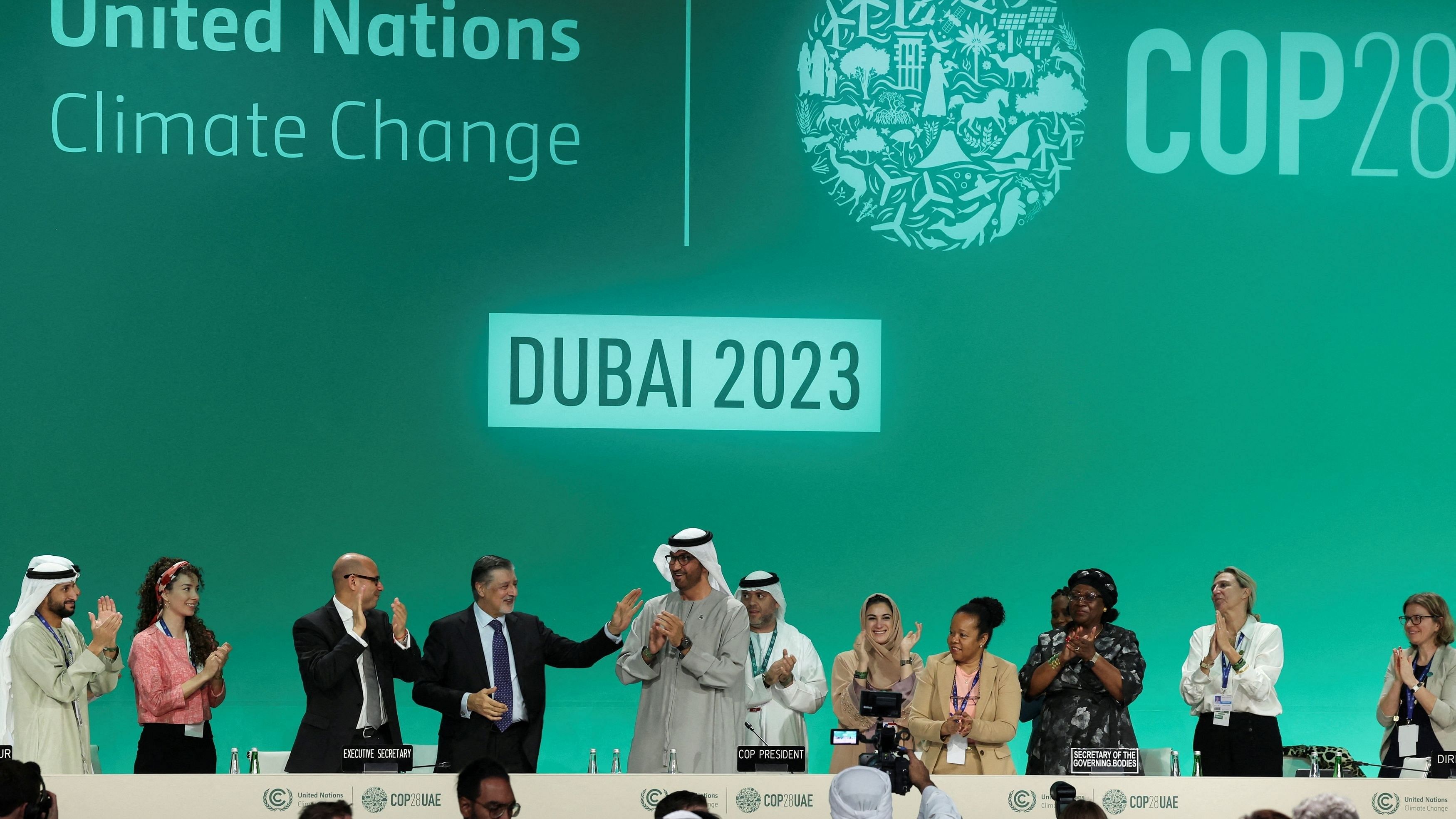
Dignitaries at the United Nations Climate Change Conference COP28 in Dubai, UAE.
Credit: Reuters photo
One of the world’s most contentious conferences, ‘The Conference of Parties’, concluded in Dubai last month. Representatives from 198 countries, from the heads of states, down to the concerned specialists and other observers, met for a full fortnight from November 28 to December 12 to thrash out where the world is heading on climate change.
The central question in these discussions was whether or not the world can “phase out” the use of fossil fuels. The term ‘fossil fuel’ is often confusing. Briefly, they are explained below:
What is crude oil and what are petroleum products?
We call crude oil and petroleum fossil fuels because they are mixtures of hydrocarbons formed from the remains of animals and plants (diatoms) that lived millions of years ago in a marine environment before dinosaurs existed.
Over millions of years, the remains of these animals and plants were covered by layers of sand, silt and rock. Heat and pressure from these layers turned the remains into what we now call crude oil or petroleum. The word petroleum means rock-oil or oil from the earth.
Most, if not all, confuse the term ‘fossil fuel’ with only oil and not coal, thinking that coal is very different as it is solid and not a fossil fuel. In fact, it is very much the same; the only difference being that it is in a solid form.
While reviewing the final decisions of the Dubai climate talks, three key questions emerge:
1. Does the ‘Dubai Consensus’ ensure an end to fossil fuels in the short run?
Far from it. Since the Berlin climate talks in 1995, it is the first time that it
has been acknowledged that anthropogenic (human-made) warming is due to fuel burn.
Until now, all climate agreements have only spoken of the need to stem greenhouse gas emissions, despite common knowledge that more than 75% of such emissions and the concentration of carbon dioxide in the atmosphere is the result of burning of coal, oil and gas.
In 2021, during the Glasgow climate talks, countries agreed to tackle coal, the fossil fuel with the biggest “carbon footprint”, to phase down on its use. Nothing tangible has taken place since then!
Clauses like “phase out” and “phase down”, bandied around, are just hollow words without substance, because no time limit has been set to achieve this. India and China have protested against mentioning coal, as these countries argue it is the most important source of power, badly needed to lift millions out of poverty.
The US has supported phasing out coal because its prime energy sources are oil and gas. However, it has not voiced any call to eliminate oil and gas. ‘Dubai Consensus’ ensured parity between the three. But there it stops. Without a timeline to phase them out, countries will keep using these energy sources and cause anthropogenic warming.
2. Is replacing fossil fuels a possibility?
The extraction, processing and distribution of coal, oil and gas is a well-
oiled infrastructure system supporting global industrialisation; one for which
no replacement can be seen in the immediate future.
Look at the following scenario: Oil production peaked in 2023 in the US. Since 2010, the number of oil barrels produced daily has tripled and gas production increased two-fold.
At CoP–28, the most embarrassing development was the turnout of a huge number of oil and gas manufacturers, leading to suspicion that the hidden agenda was to strike oil deals. Remember, Dubai talks held in oil-rich Abu Dhabi fuelled the suspicion. BBC has widely covered this aspect.
‘Dubai Consensus’ suggests that a transition from fossil fuels, like natural gas, can ensure energy security, but there is a catch: methane production. Switching from coal to gas reduces emissions by 50%, and this will naturally give an unfair commercial advantage to countries with its large reserves.
3. What is the status of methane (CH4) vis-à-vis the ‘Dubai Consensus’?
It is a key component of natural gas, causing almost a third of global warming, next to carbon dioxide, in its potency to heat up the globe. But there is no timeline for phasing it out. India has resisted pressure on the grounds that most methane originates in agricultural activities. The Global Methane Pledge to cut methane emissions 30% of 2020 levels by 2030 was made in COP-27 in Egypt in 2022.
Very surprisingly, none made a mention of nitrous oxide (N2O), emanating from the unbridled use of chemical fertilizers like urea, used to prop up the green revolution. In terms of the amount of heat these gases can absorb and re-radiate (known as their global warming potential or GWP), methane (CH4) is 23 times more effective and N2O is 296 times more effective than CO2.
India’s options
India’s position is unenviable against
the ‘Dubai Consensus’ as it cannot
dispense with coal.
One very important sector in which the country can make a dent — for its very survival is in the agricultural sector, where it can cut down drastically on the production of nitrous oxide, a most potent heat-trapping gas — involves searching, locating and multiplying the ‘crop wild relatives’ of the currently cultivated germplasms of rice and wheat. As both crops are India’s principal staples, Indian researchers can cross-breed them with cultivated ones and evolve hybrids.
It will take both time and resources. All the details are explained in the book titled Containing Anthropogenic Warming to Ensure Global Food Security, published by Springer Nature International.
The mandarins in the Government of India, more specifically in the Indian Council of Agricultural Research, New Delhi, should wake up to the immense potential of this revolutionary idea.
(The writer is a former professor at the National Science Foundation, The Royal Society, Belgium)